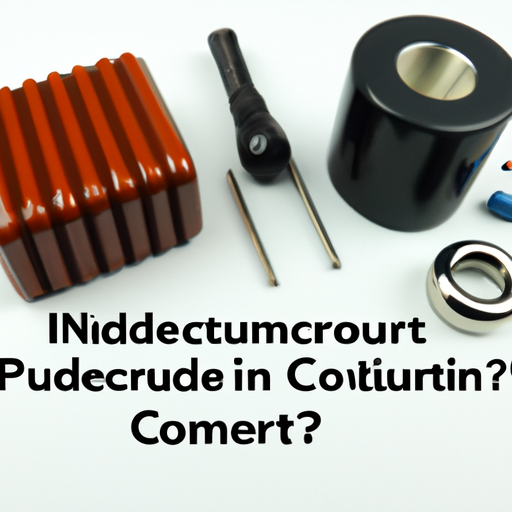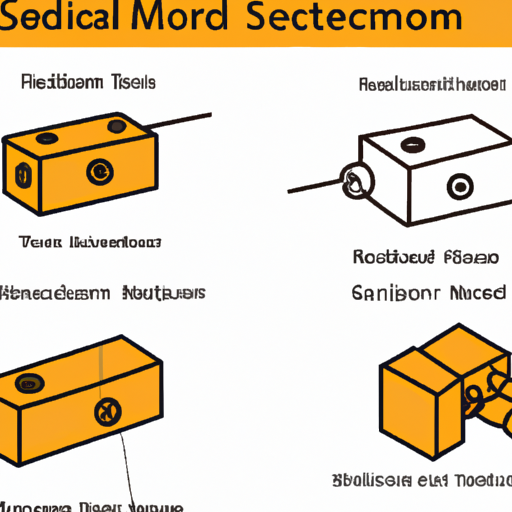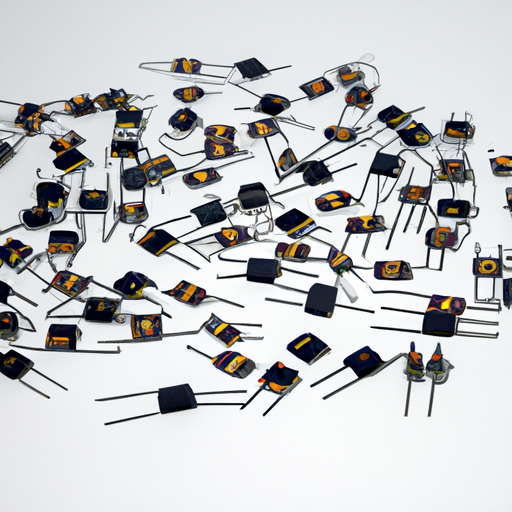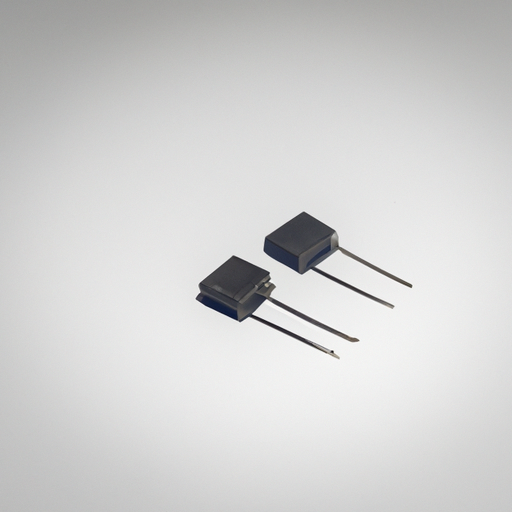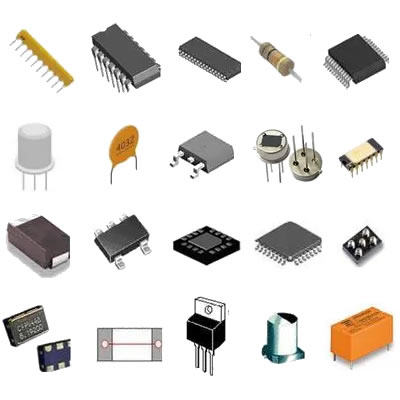What components and modules does a power inductor contain?
What Components and Modules Does a Power Inductor Contain?
I. Introduction
A. Definition of Power Inductor
A power inductor is a passive electronic component that stores energy in a magnetic field when electrical current flows through it. It is primarily used in power supply circuits, DC-DC converters, and various filtering applications. Unlike resistors and capacitors, inductors resist changes in current, making them essential for managing energy flow in electronic devices.
B. Importance of Power Inductors in Electronic Circuits
Power inductors play a crucial role in modern electronics, particularly in power management systems. They help regulate voltage levels, filter out noise, and store energy, contributing to the efficiency and stability of electronic circuits. As devices become more compact and energy-efficient, the demand for high-performance inductors continues to grow.
C. Overview of the Article
This article will explore the key components and modules that make up a power inductor, including core materials, wire windings, and additional features such as shielding and thermal management. We will also discuss the performance characteristics of power inductors and their applications in various electronic systems.
II. Basic Principles of Inductance
A. Explanation of Inductance
Inductance is the property of an electrical conductor that opposes changes in current. When current flows through a coil of wire, it generates a magnetic field around it. If the current changes, the magnetic field also changes, inducing a voltage in the opposite direction. This phenomenon is known as self-inductance.
B. Role of Magnetic Fields in Inductance
The magnetic field created by the current in the wire is fundamental to the operation of inductors. The strength of this magnetic field is proportional to the amount of current flowing through the wire and the number of turns in the coil. The core material used in the inductor can significantly enhance the magnetic field, thereby increasing the inductance.
C. Inductance in Power Applications
In power applications, inductors are used to smooth out fluctuations in current and voltage, store energy, and filter out unwanted signals. They are essential in applications such as switching power supplies, where they help maintain stable output voltages despite varying input conditions.
III. Key Components of a Power Inductor
A. Core Material
1. Types of Core Materials
The core material of a power inductor is critical to its performance. Common types of core materials include:
Ferrite: Ferrite cores are made from a ceramic compound of iron oxide mixed with other metals. They are lightweight and have high magnetic permeability, making them ideal for high-frequency applications.
Iron Powder: Iron powder cores are made from small particles of iron compressed into a specific shape. They offer good performance at lower frequencies and are often used in applications requiring high inductance values.
Laminated Steel: Laminated steel cores consist of thin sheets of steel stacked together. This design reduces eddy current losses and is commonly used in power transformers and inductors for low-frequency applications.
2. Impact of Core Material on Performance
The choice of core material affects the inductor's inductance value, saturation current, and efficiency. Ferrite cores are preferred for high-frequency applications due to their low losses, while iron powder cores are suitable for applications requiring high inductance at lower frequencies.
B. Wire Windings
1. Types of Conductors
The wire used for the windings of a power inductor is typically made from conductive materials such as:
Copper: Copper is the most common conductor used in inductors due to its excellent conductivity and thermal properties.
Aluminum: Aluminum is lighter and less expensive than copper, but it has higher resistance, which can lead to increased losses in high-frequency applications.
2. Insulation and Its Importance
Insulation is crucial for preventing short circuits between the wire turns and ensuring the inductor operates safely. Common insulation materials include enamel coatings and plastic films, which provide electrical isolation while allowing for compact winding designs.
3. Number of Turns and Its Effect on Inductance
The number of turns in the wire winding directly affects the inductance value. More turns increase the inductance, allowing the inductor to store more energy. However, increasing the number of turns also increases the resistance and can lead to higher losses, so a balance must be struck in design.
C. Bobbin or Form
1. Purpose of the Bobbin
The bobbin or form is the structure around which the wire is wound. It provides mechanical support and helps maintain the shape of the inductor. The design of the bobbin can also influence the magnetic properties of the inductor.
2. Materials Used for Bobbins
Bobbins are typically made from non-magnetic materials such as plastic or composite materials. These materials help minimize losses and prevent interference with the magnetic field generated by the inductor.
3. Design Considerations
When designing a bobbin, factors such as size, shape, and material must be considered to optimize the inductor's performance. The bobbin must also accommodate the required number of wire turns while ensuring adequate insulation and mechanical stability.
IV. Additional Modules and Features
A. Shielding
1. Purpose of Shielding in Power Inductors
Shielding is used to prevent electromagnetic interference (EMI) from affecting the performance of the inductor and surrounding components. It helps maintain signal integrity and reduces noise in sensitive applications.
2. Types of Shielding Techniques
Common shielding techniques include using conductive enclosures, magnetic shields, and ferrite beads. These methods help contain the magnetic field within the inductor and prevent it from radiating into nearby circuits.
B. Terminals and Connectors
1. Types of Terminals
Power inductors can have various terminal types, including through-hole, surface mount, and wire leads. The choice of terminal type depends on the application and the design of the circuit board.
2. Importance of Reliable Connections
Reliable connections are essential for ensuring the inductor functions correctly and maintains performance over time. Poor connections can lead to increased resistance, heat generation, and potential failure of the inductor.
C. Thermal Management Features
1. Heat Dissipation Techniques
Inductors can generate heat during operation, especially under high current conditions. Effective heat dissipation techniques, such as using heat sinks or thermal pads, can help maintain optimal operating temperatures and prolong the life of the inductor.
2. Impact of Temperature on Inductor Performance
Temperature can significantly affect the performance of power inductors. High temperatures can lead to increased resistance, reduced inductance, and potential saturation. Therefore, thermal management is a critical aspect of inductor design.
V. Performance Characteristics
A. Inductance Value
1. Measurement and Specifications
The inductance value is a key specification for power inductors, typically measured in henries (H). It is essential to select an inductor with the appropriate inductance value for the specific application to ensure optimal performance.
2. Factors Affecting Inductance Value
Several factors can influence the inductance value, including the core material, number of turns, and physical dimensions of the inductor. Designers must consider these factors when selecting or designing inductors for specific applications.
B. Saturation Current
1. Definition and Importance
Saturation current is the maximum current an inductor can handle before its inductance begins to decrease significantly. Exceeding this current can lead to overheating and potential failure of the inductor.
2. Effects of Saturation on Performance
When an inductor reaches saturation, it can no longer store energy effectively, leading to reduced performance in power applications. Understanding the saturation current is crucial for ensuring reliable operation in high-current applications.
C. DC Resistance (DCR)
1. Importance of DCR in Power Inductors
DC resistance (DCR) is the resistance of the inductor when a direct current flows through it. It is an important parameter as it affects the efficiency of the inductor and the overall performance of the circuit.
2. Factors Influencing DCR
DCR is influenced by factors such as the wire gauge, number of turns, and the type of conductor used. Designers must consider DCR when selecting inductors to minimize losses and improve efficiency.
VI. Applications of Power Inductors
A. Power Supply Circuits
Power inductors are widely used in power supply circuits to regulate voltage levels and filter out noise. They help maintain stable output voltages, ensuring reliable operation of electronic devices.
B. DC-DC Converters
In DC-DC converters, power inductors play a critical role in energy storage and transfer. They help convert voltage levels efficiently, making them essential for battery-powered devices and renewable energy systems.
C. Filtering Applications
Power inductors are used in filtering applications to remove unwanted frequencies from signals. They help improve signal quality in audio systems, communication devices, and other electronic applications.
D. Energy Storage Systems
In energy storage systems, power inductors are used to store energy for later use. They are essential in applications such as electric vehicles and renewable energy systems, where efficient energy management is crucial.
VII. Conclusion
A. Summary of Key Components and Modules
Power inductors are complex components that consist of various key elements, including core materials, wire windings, and additional features such as shielding and thermal management. Each component plays a vital role in the inductor's performance and efficiency.
B. Importance of Understanding Power Inductor Design
Understanding the design and functionality of power inductors is essential for engineers and designers working in the electronics industry. Knowledge of the components and their interactions can lead to better product designs and improved performance.
C. Future Trends in Power Inductor Technology
As technology continues to advance, the demand for high-performance power inductors will grow. Future trends may include the development of new materials, improved manufacturing techniques, and innovative designs that enhance efficiency and reduce size.
VIII. References
A. Academic Journals
- IEEE Transactions on Power Electronics
- Journal of Applied Physics
B. Industry Publications
- Power Electronics Magazine
- Electronic Design
C. Manufacturer Specifications
- Datasheets from leading inductor manufacturers
- Technical white papers on inductor design and applications
---
This blog post provides a comprehensive overview of the components and modules that make up power inductors, highlighting their importance in electronic circuits and various applications. Understanding these elements is crucial for anyone involved in the design and implementation of electronic systems.

